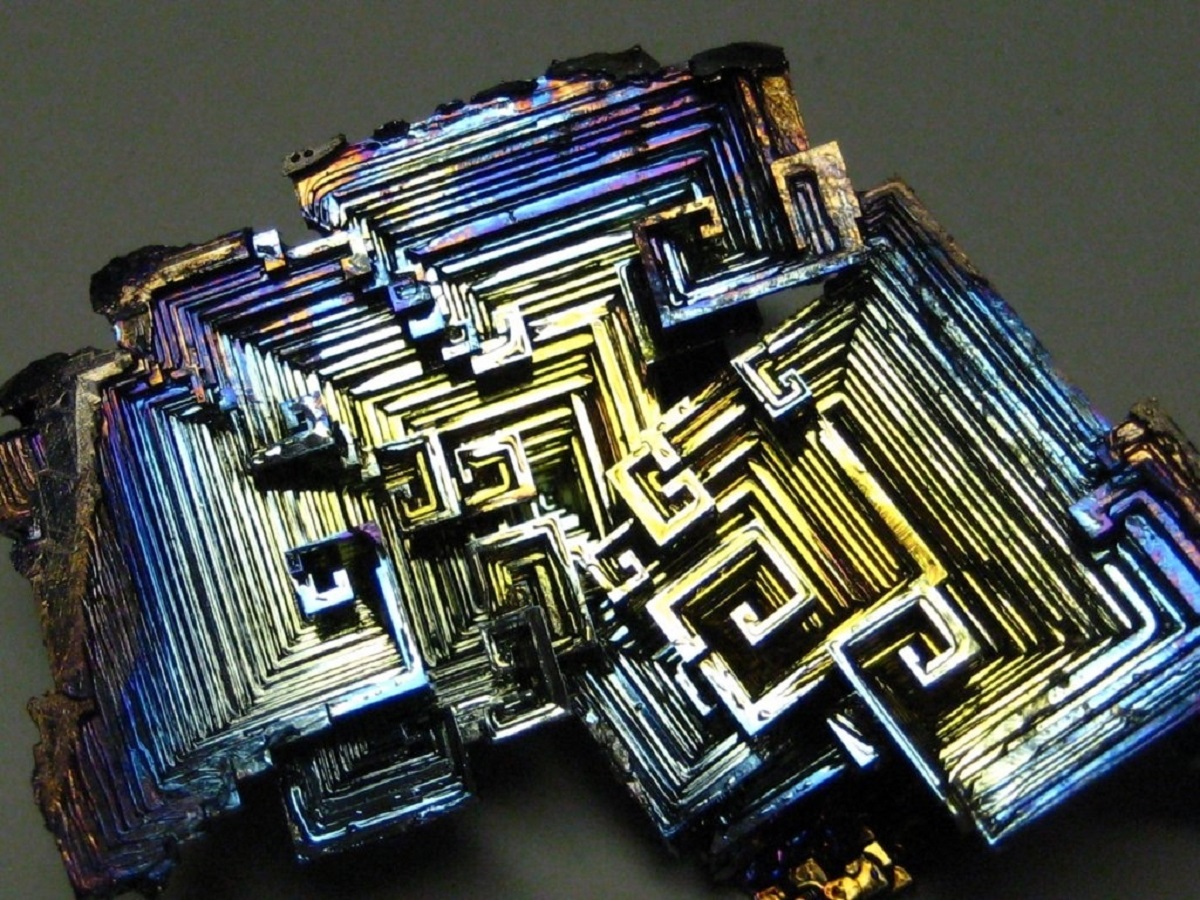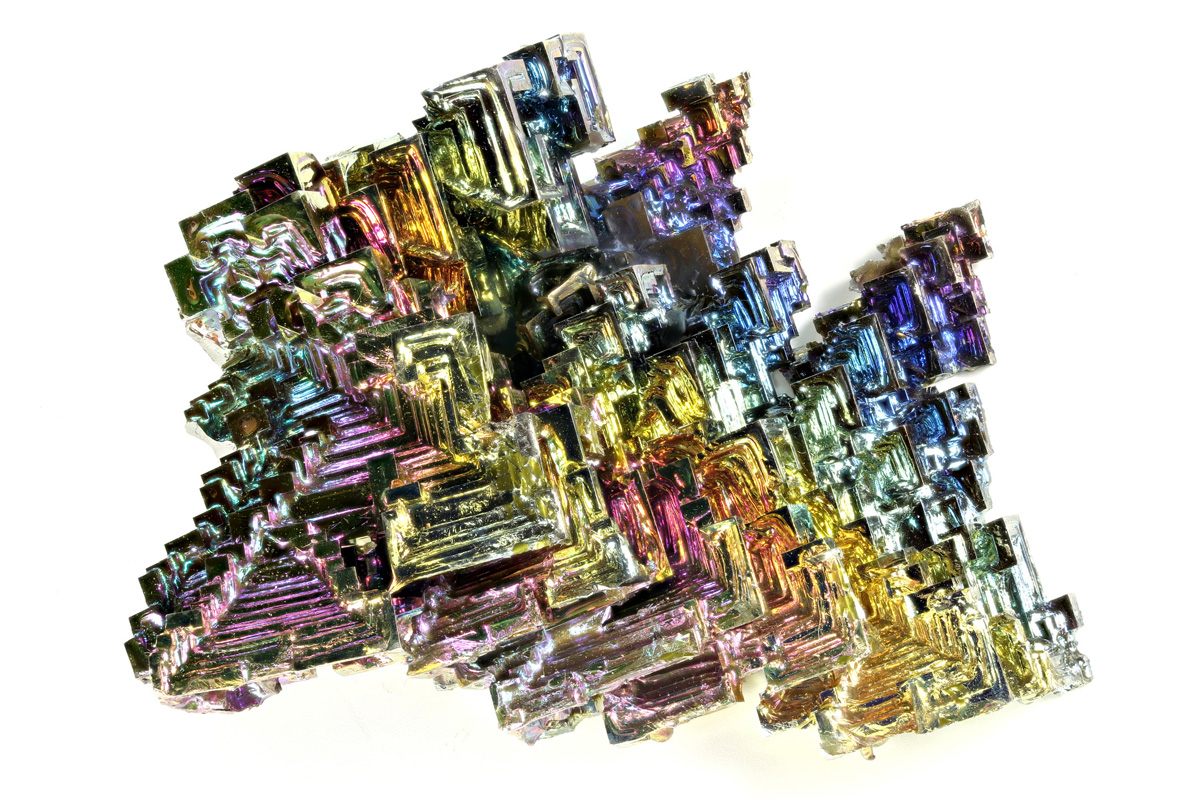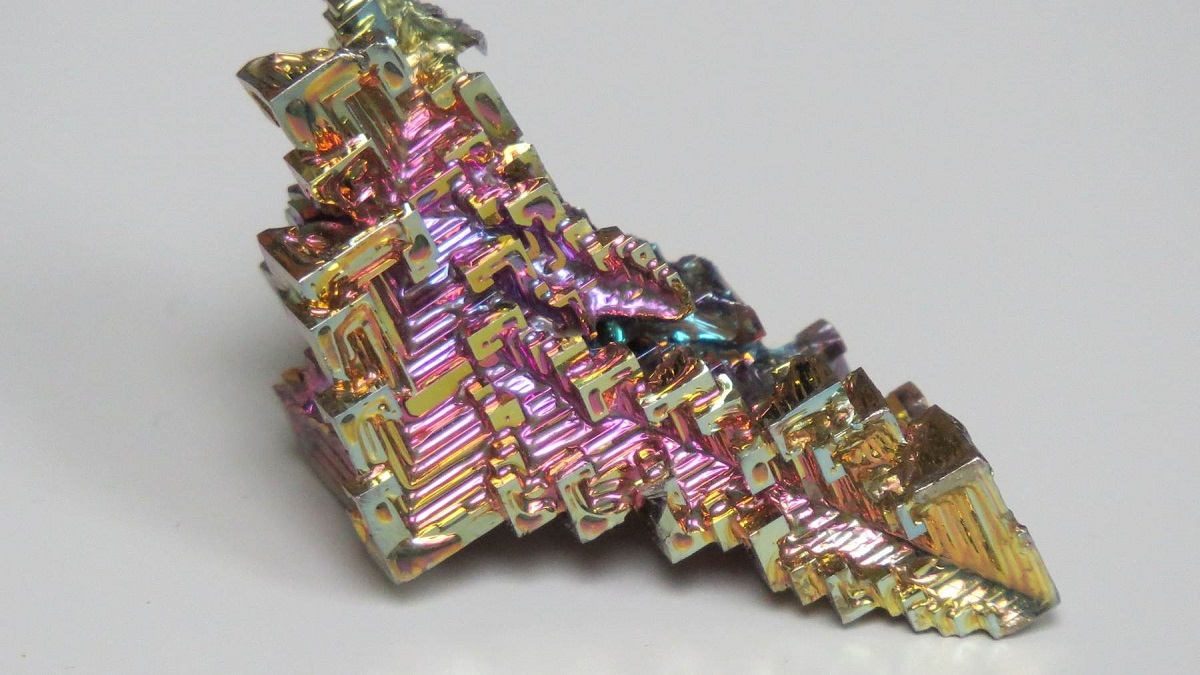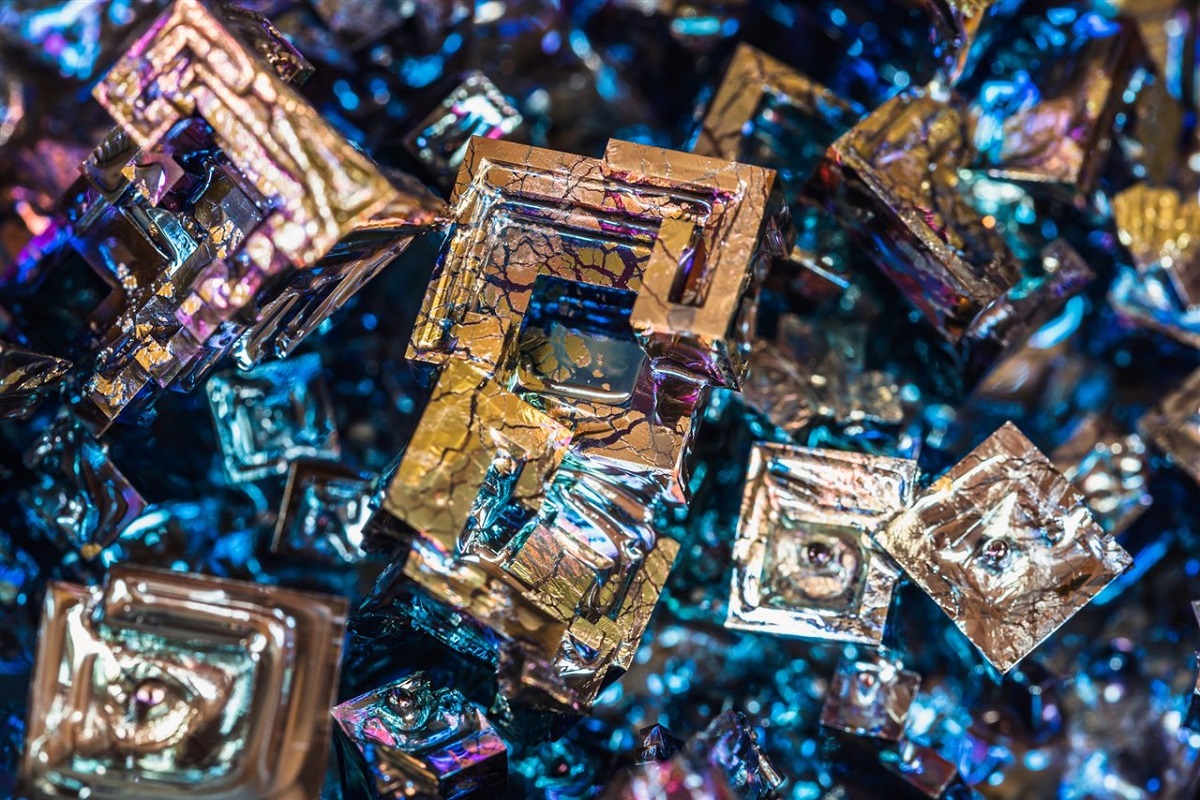
Bismuth is considered one of the most abundant metals in the earth's crust, it is an element located in group 15 of the periodic table, with the chemical symbol Bi, atomic number 83 and atomic number of mass 208.9804 units. Due to the color of this element, the word bismuth comes from the German word “bisemutum”, which means “white matter”. The bismuth properties They are varied and have various uses worth knowing.
Therefore, we are going to dedicate this article to tell you all the characteristics, history, origin and properties of bismuth.
Some history

It constitutes 0,00002% of the earth's crust, is very rare and is very similar to silver. It can exist in mineral formations in the pure metallic state. It has a melting point of 271 °C, a density of 9800 kg/m³, and a boiling point of 1560 °C.
The element was previously confused with lead and tin because they shared some similar properties, but chemists have been trying to prove their differences.
It was one of the first ten metals to be discovered, and its discovery is not attributed to any person in particular, since it has been known since ancient times. Due to its similarity, the element was initially confused with lead and tin. On the basis of careful observations of the physical properties of this metal, the researcher Georgius Agricola, in particular in 1546, he identified bismuth as a distinct metal in the family of metals containing tin and lead.
In the age of alchemy, some miners called bismuth "tectum argenti," meaning "silver in the making," referring to the silver that would be found within the Earth during its formation.
In 1738, researchers like Carl Wilhelm Scheele, Johann Heinrich Pott, and Torbern Olof Bergman clearly distinguished bismuth from lead.; but it was not until 1753 that Claude François Geoffrey showed that the metallic bismuth was quite different from tin and lead.
The Incas also used this element with tin and copper, where they created an alloy of bronze to make knives.
bismuth properties

It is a greyish-white crystal, bright, hard and brittle. Bismuth expands as it solidifies and it is important to note that very few metals undergo this reaction. Also, this metal has a low thermal conductivity compared to any other metal except mercury.
Bismuth is inert when exposed to dry air at room temperature, but oxidizes slightly if exposed to moisture. Also, if exposed to temperatures above its melting point, it will quickly form an oxide layer, which will burn to a yellow oxide when it turns red.
This metal can be combined directly with halogens, sulfur, tellurium, and selenium, but not with phosphorus and nitrogen. Carbonated water at normal temperature will not attack it, but the water vapor will slowly oxidize it red.
Generally, almost all of its compound forms are trivalent, but in some cases it can be monovalent or pentavalent. It is worth noting that sodium bismuth and bismuth pentafluoride are very important Bi(V) compounds because the former is a very powerful oxidizing agent, while the latter is a very useful fluorinating agent for organic compounds.
Properties of bismuth in spiritual matters

Bismuth stones are known for their ability to help activate Kundalini energy, and these stones alter the energy in the crown chakra, sending it back to the root chakra.
When placed on the crown chakra, it helps to experience better judgment, more knowledge, and foresight.
- You can affectively unite the members of a group.
- They have very useful and stimulating healing properties for the body.
- They are very helpful in helping to get used to high vibration stones.
- Helps create a deep connection to the universal mind and all things.
- They help you adjust when you feel alone, disconnected from yourself or from others.
- It attracts positive vibes when it comes to money.
- In betting and gambling it brings good luck.
- It can help people think more constructive and less outdated thoughts.
Uses
- Bismuth is used in the pharmaceutical industry, which is the industry that needs the most use of this element, for the production of antidiarrheals and chemical products for the treatment of eye and bacterial infections, allergies, flatulence, syphilis, flu, etc.
- The industrial sector also uses bismuth to make cosmetic pigments such as hairsprays, nail polishes and eye shadows.
- In the metallurgical industry, this element is useful for making alloys with low melting points, which are used as suppression devices in security systems and fire detectors.
- Bismuth is an excellent substitute for lead, which is poisonous, and because of its close density, it is used to make ballasts, ballistic projectiles, etc.
- Bismuth is used as latex shield coating and, due to its valuable atomic weight and high density, as protection against X-rays in certain medical analytical tests such as tomography.
- There are vehicles with thermocouple systems for transporting fuel for nuclear reactors U-235 and U-233, and bismuth is also used in these systems.
- An alloy of bismuth and manganese produces bisphenols, which are used to make very powerful permanent magnets.
- Bismuth oxychloride is used in the manufacture of artificial pearls.
- When X-rays of the digestive system are required, bismuth nitrate is administered to patients in the form of a suspension because the composition is relatively opaque to X-rays.
Origin and formation
bismuth frequently found in dendritic clumps and also in hydrothermal veins high temperature or pegmatite deposits. It is usually granular or scaly, but also fibrous or needle-like.
China is considered the world's largest producer of bismuth with exactly 7.200 metric tons, eight times more than all producers combined, they are: Mexico 825 metric tons, Russia 40 metric tons, Canada 35 metric tons, and Bolivia 10 metric tons. Likewise, it has been commented that the main and most extensive deposits of bismuth are found in South America.
Other places where bismuth can be found are: Germany, the United States, Spain, the United Kingdom and Australia.
I hope that with this information you can learn more about the properties of bismuth and its characteristics.